Intel NUC5i5RYK Review: A Broadwell-U UCFF PC for Enthusiasts
by Ganesh T S on February 20, 2015 8:00 AM ESTGaming Benchmarks
Intel's integrated GPUs don't have a big name in the gaming community. Once in a while, Intel throws in a surprise. In the Haswell family, CPUs with Iris Pro graphics gave a pleasant surprise to casual gamers. In this section, we will identify whether the Intel HD Graphics 6000 in the Core i5-5250U can provide an acceptable gaming experience. It will also be interesting to determine whether HD 6000 can provide better numbers compared to the HD 5500 in the Core i7-5500U (BRIX s).
For the purpose of benchmarking, we chose four different games (Sleeping Dogs, Tomb Raider, Bioshock Infinite and DiRT Showdown) at three different quality levels. As someone focusing on HTPCs and multimedia aspects, I rarely get to process gaming benchmarks, even while evaluating GPUs. One of the aspects that I feared was spending lot of time in installing the same games again and again on different PCs under the review scanner. The solution was to go the Steam route. Unfortunately, Steam also likes to keep the game files updated. A quick online search revealed that Steam could make use of an external drive for storing the game executables and downloadable content. With the Steam drive on-the-go use-case being read-heavy, the Corsair Flash Voyager GS USB 3.0 128GB Flash Drive (with read speeds of up to 275 MBps) was ideal for use as a portable Steam drive.
Sleeping Dogs
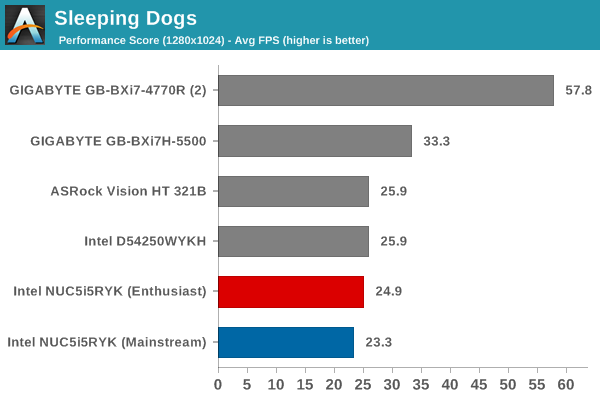
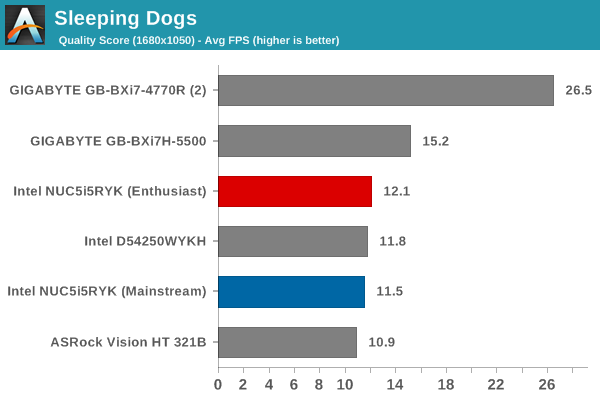
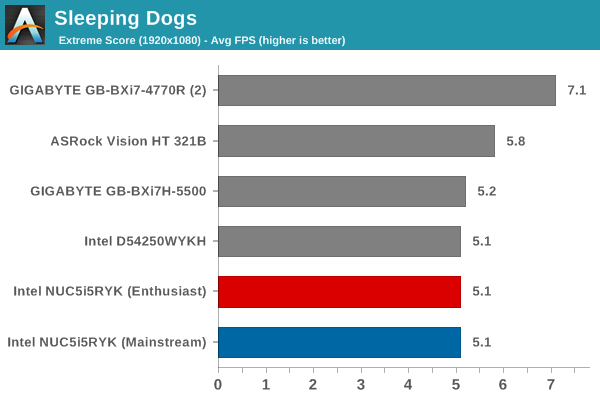
Tomb Raider
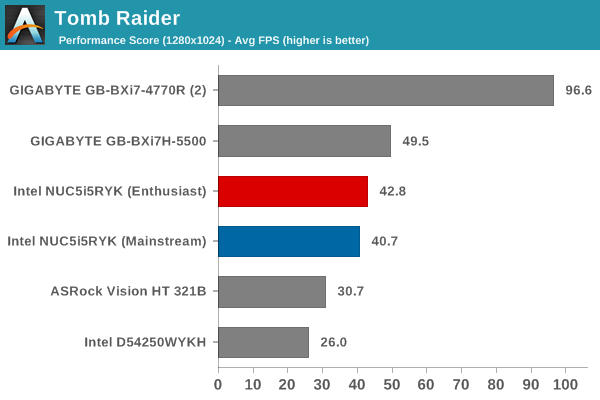
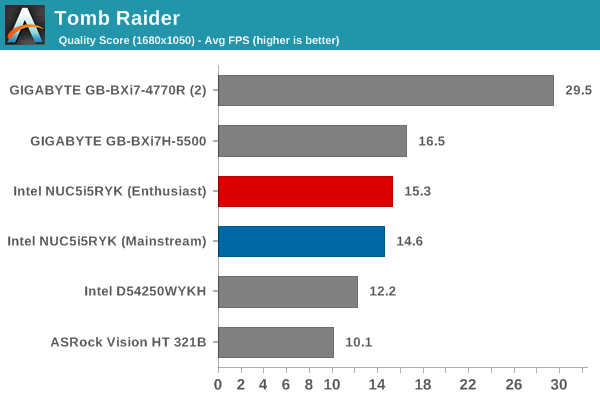
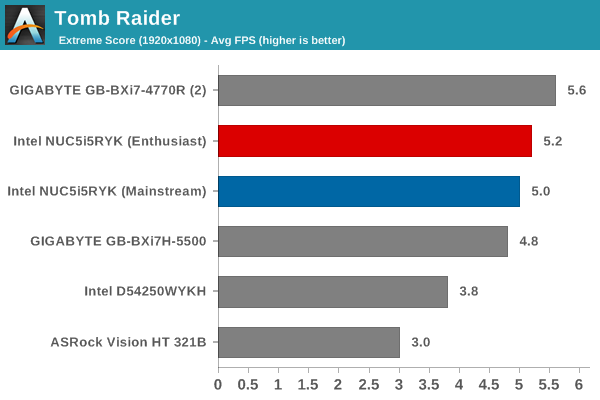
Bioshock Infinite
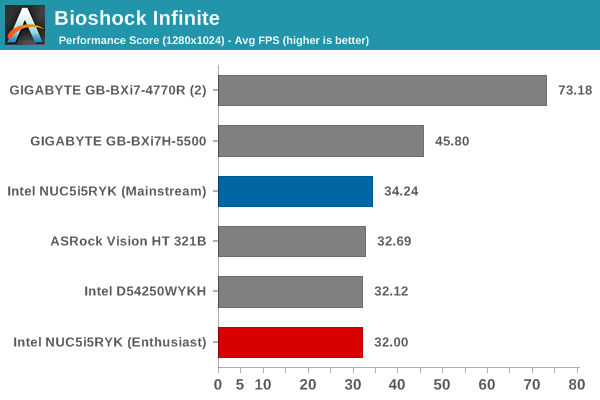
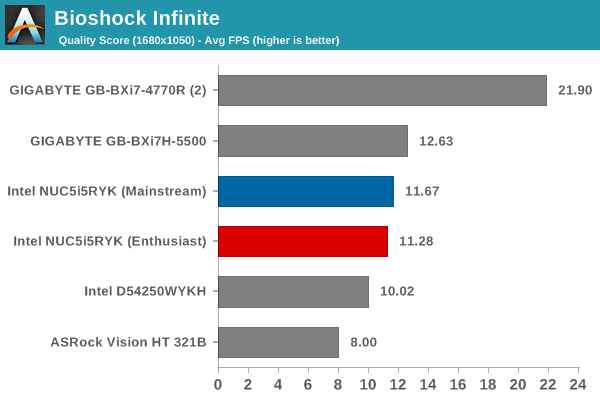
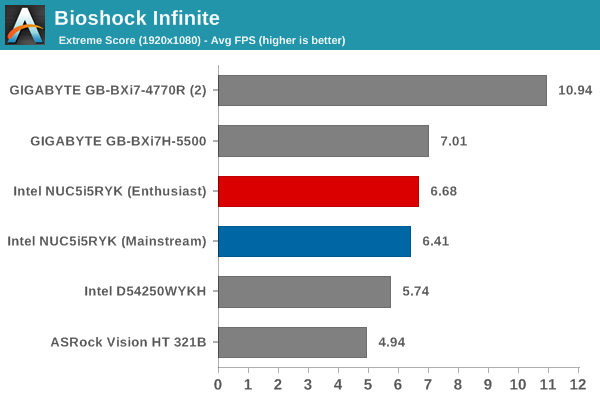
DiRT Showdown
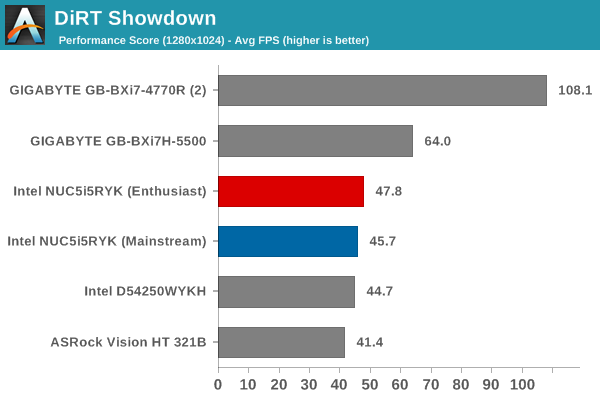
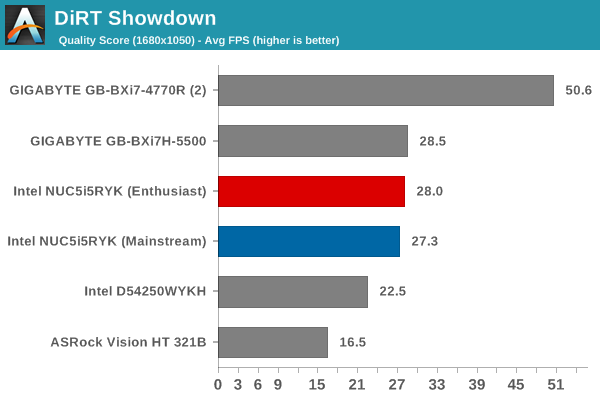
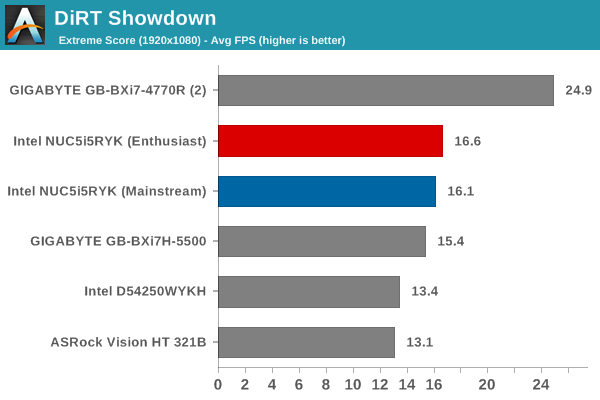
The gaming benchmarks, when considered as a showdown between the HD Graphics 5500 and HD Graphics 6000, is is a complete walkover for the former in the Core i7-5500U. Faster memory helps in salvaging a few FPS here and there, but the games are not fluid even with all settings dialed down. One aspect to be kept in mind while considering the above results is that the HD 5500 in the Core i7-5500U had accesses to DRAM running at 2133 MHz, while the HD 6000 in the NUC5i5RYK was limited to 1866 MHz.










83 Comments
View All Comments
gfieldew - Saturday, February 21, 2015 - link
Damn, wrong post, please ignore.medi03 - Sunday, February 22, 2015 - link
Lack of AMD APUs in comparison charts is somewhat suspicious, to say the least.mits2k - Monday, February 23, 2015 - link
I am glad that Anandtech is evaluating 4K playback on these devices. Regular 1080p HTPCs seem to have reached a plateau in the past few years.I was confused by the evaluation of 4K scaled to 1080p. Are the new LAV filters that fix the scaling issues incorporated into the latest MPC-HC? Will LAV be taking advantage of the partially in-hardware 4K decoding via DXVA on Intel QuickSync soon? Does the HDMI output of this device support HDMI 2.0, enabling 4K/60p/4:4:4 color bit-depth? If not, does the DisplayPort support this bitrate? Will this device support HDCP 2.2 for protected 4K bluray output?
I bought an ASUS chromebox ($179 version) and have been successfully using it with my 4K monitor (Monoprice model) and 4K TV (Samsung). It renders the desktop in 4K30Hz, not at 60Hz. It is too slow/there is not appropriate software in linux to handle 4K videos without occasionally dropping frames, so I was going to upgrade to the NUC to handle this.
rangerdavid - Monday, February 23, 2015 - link
"The first Sandy Bridge NUC was important for two main reasons - the obvious one being the kickstarting of the UCFF craze."What, no nod to the Mac Mini, circa 2005? (Or even the G4 Cube if you want to geek out with me...)
Kidster3001 - Friday, February 27, 2015 - link
He didn't say NUC was the first but that it kick started the current popularity of the form factor.Haravikk - Wednesday, February 25, 2015 - link
I'm doing quite well on a small form factor system at the moment, using an i7-4790T (45W 2.7ghz quad-core, hyper-threading, 3.9ghz turbo and HD4600 graphics) in an Akasa Euler case. Only downside has been that I had to trade in the mSATA hard drive I was using for a regular 2.5" SSD, as the mSATA just got too hot in such a confined, passively cooled space.jasperjones - Wednesday, February 25, 2015 - link
I am shocked what you guys use as a HTPC. And what good are these SSDs in a HTPC???I use a rooted Amazon Fire TV as my HTPC (purchased for € 49 at the introductory rate for Prime customers). Thus far, it has handled everything I've thrown at it. By the time I need H.265 and 4K, I imagine another ARM box priced below a hundred bucks will be around.
To me, this NUC is a desktop replacement (for non-gamers) or a small-server replacement.
nerd1 - Sunday, March 1, 2015 - link
I have no idea why somebody is even bothering to try AMD - they are horrible.I am in market for small and lightweight PCs, and have used AMD once - it ate twice the current of NUC yet twice slower. So 1/4 performance per power. Oh and it wasn't that cheaper too.
piasabird - Tuesday, March 3, 2015 - link
Well I would just compare this to at least a desktop Pentium, i3,i5, i7 to see what the difference is. Is this weak slow running processor as good as say an i3 4330 that runs at 3.5 Ghz, with 4 Megs of Cache, and HD 4600 IGP?Ceois - Wednesday, March 4, 2015 - link
On the first picture from the BIOS gallery it says CPU Core Temp 51C. Isn't that a little too high for it being idle?